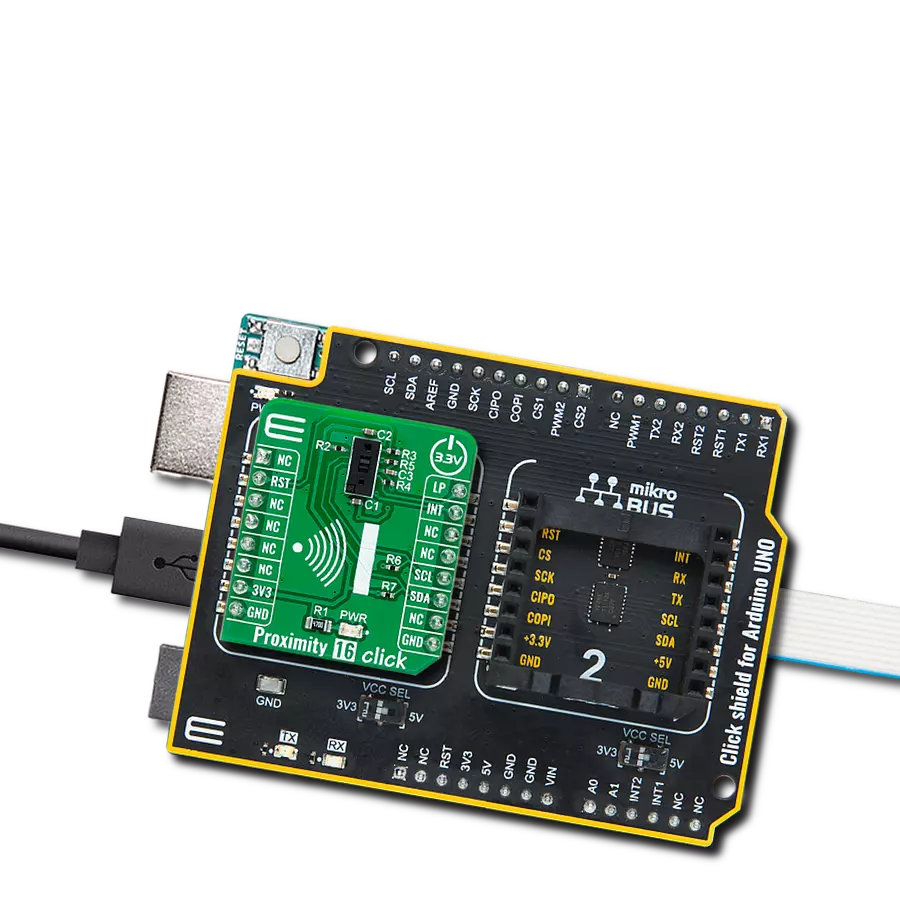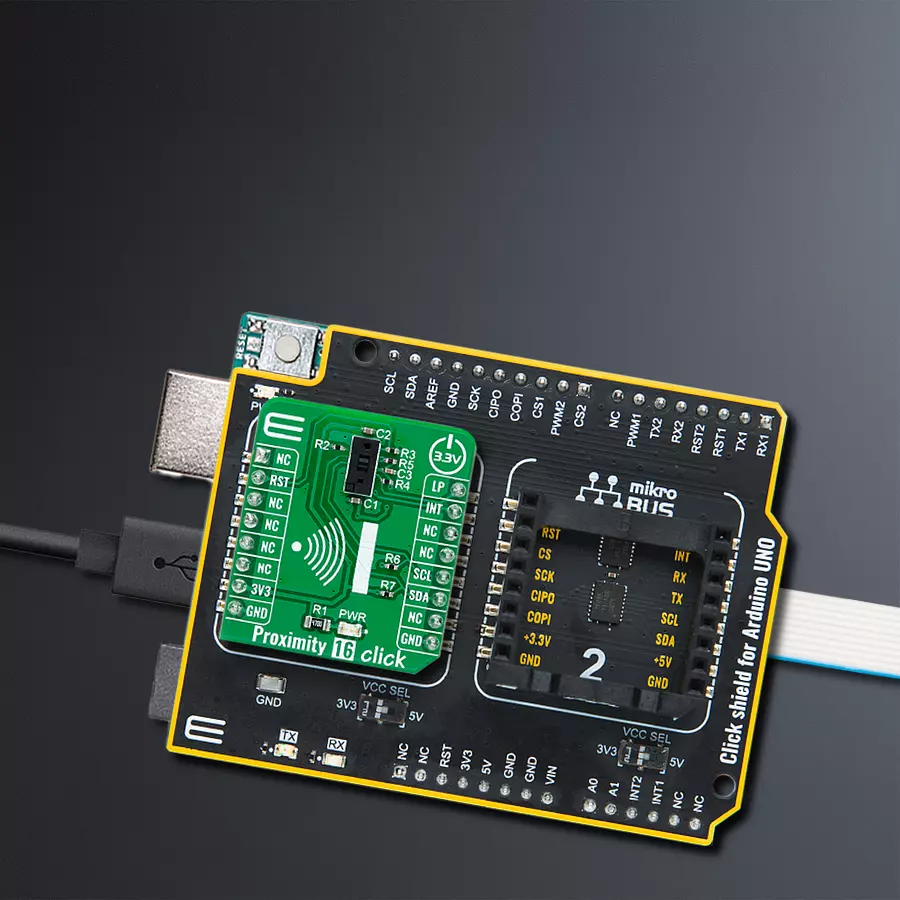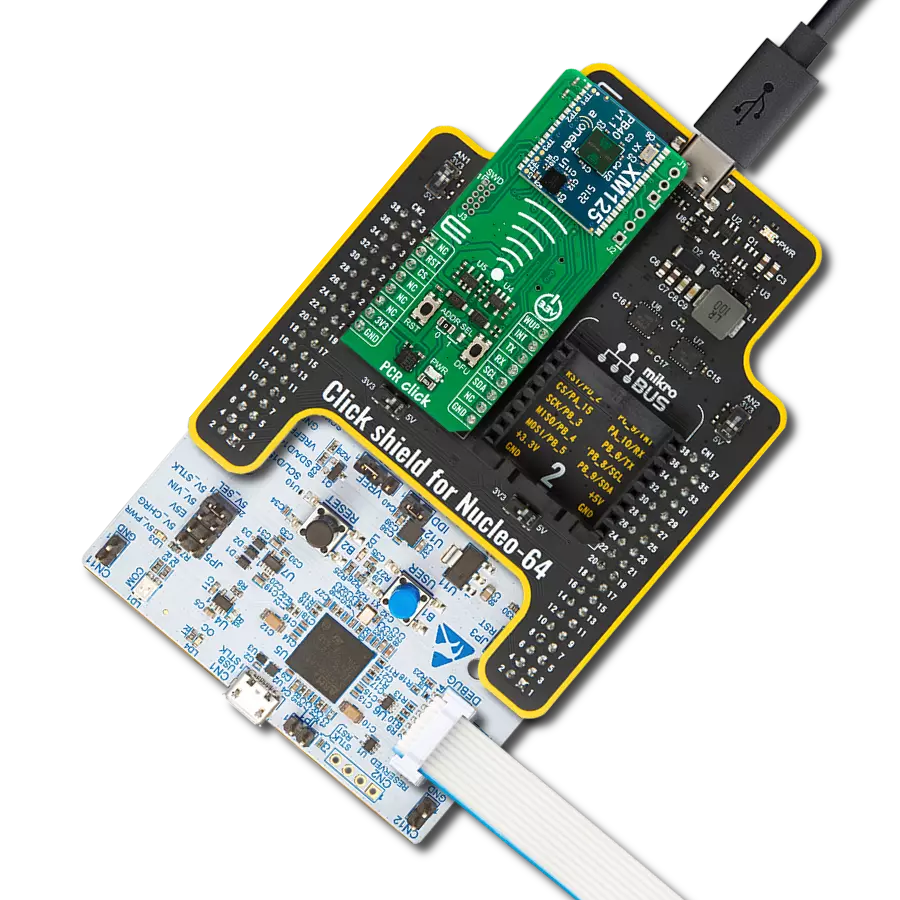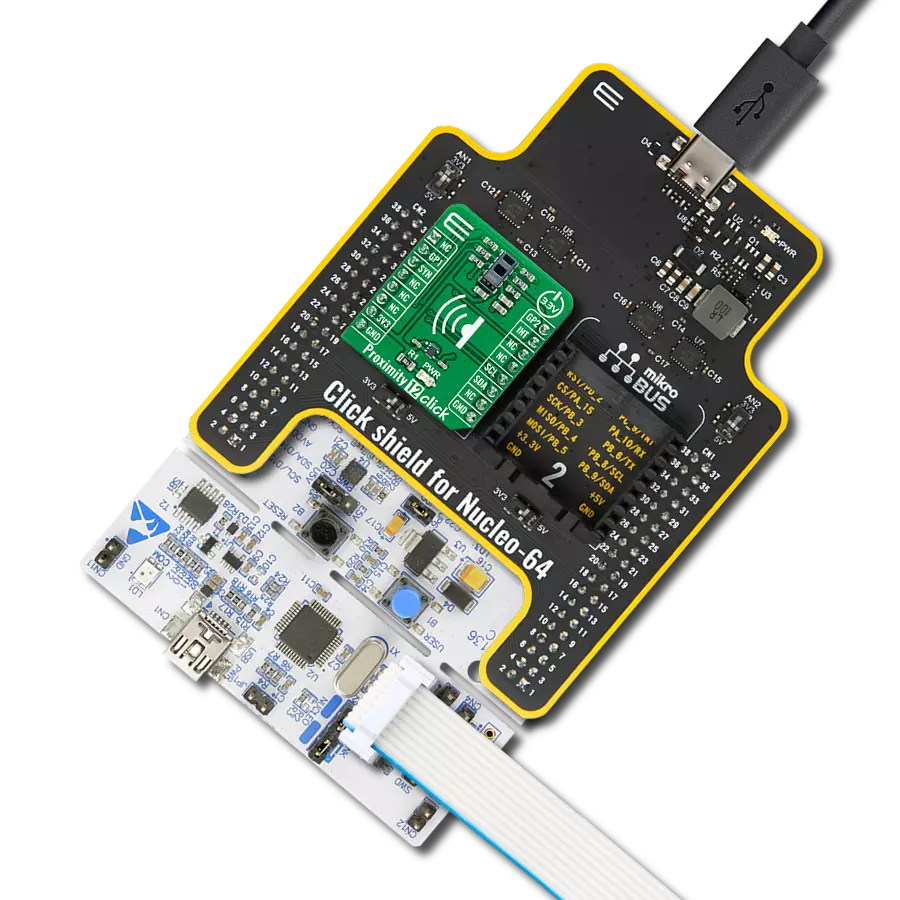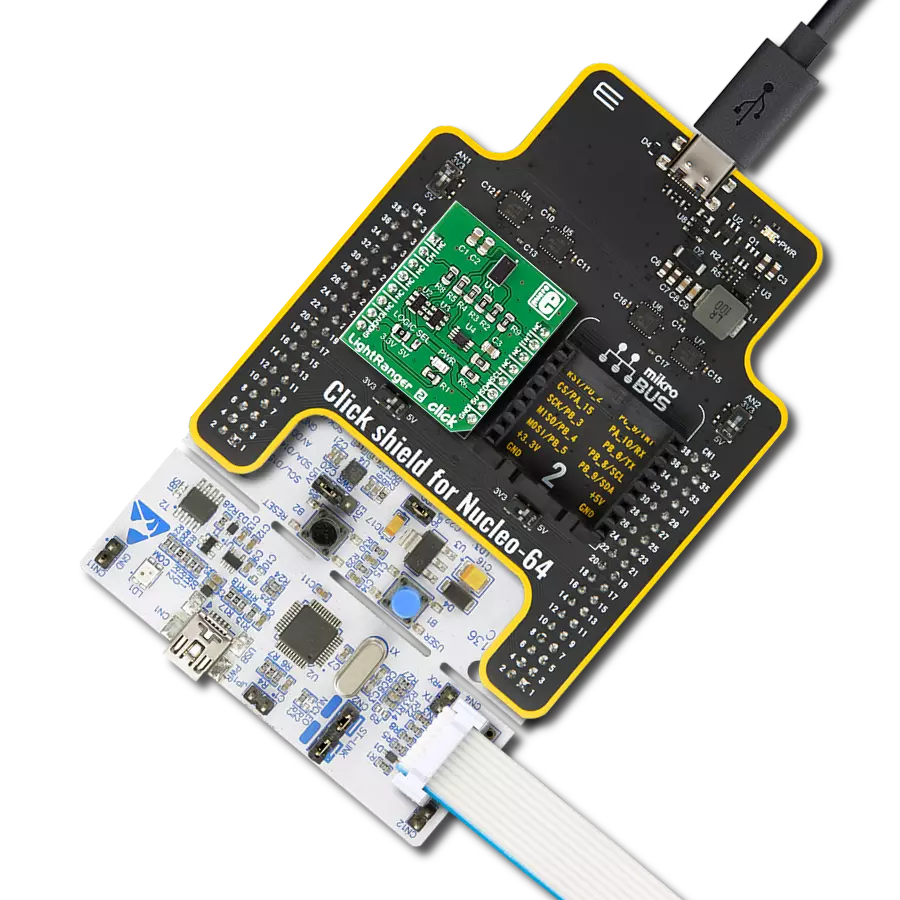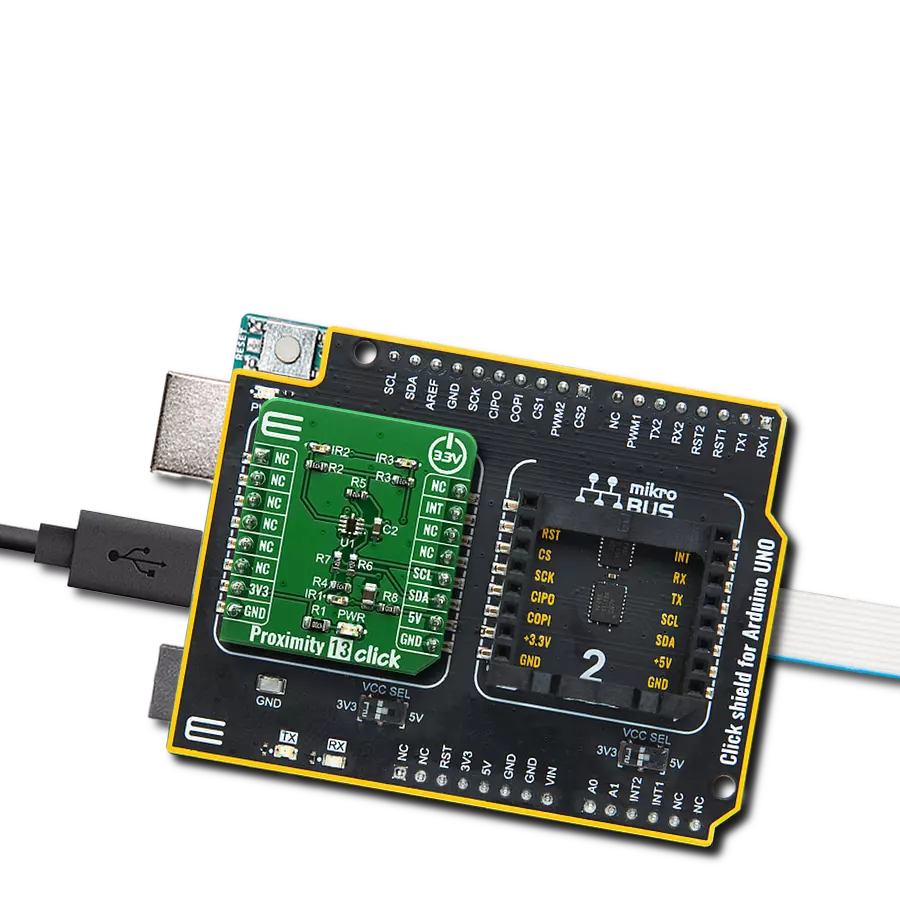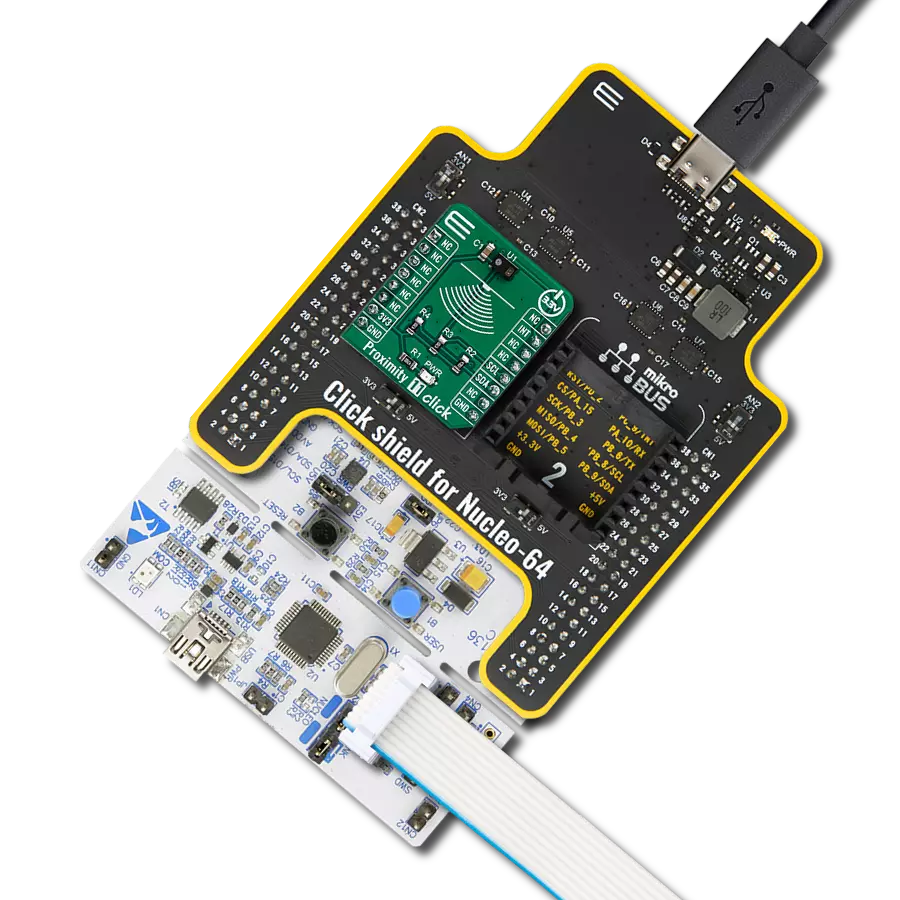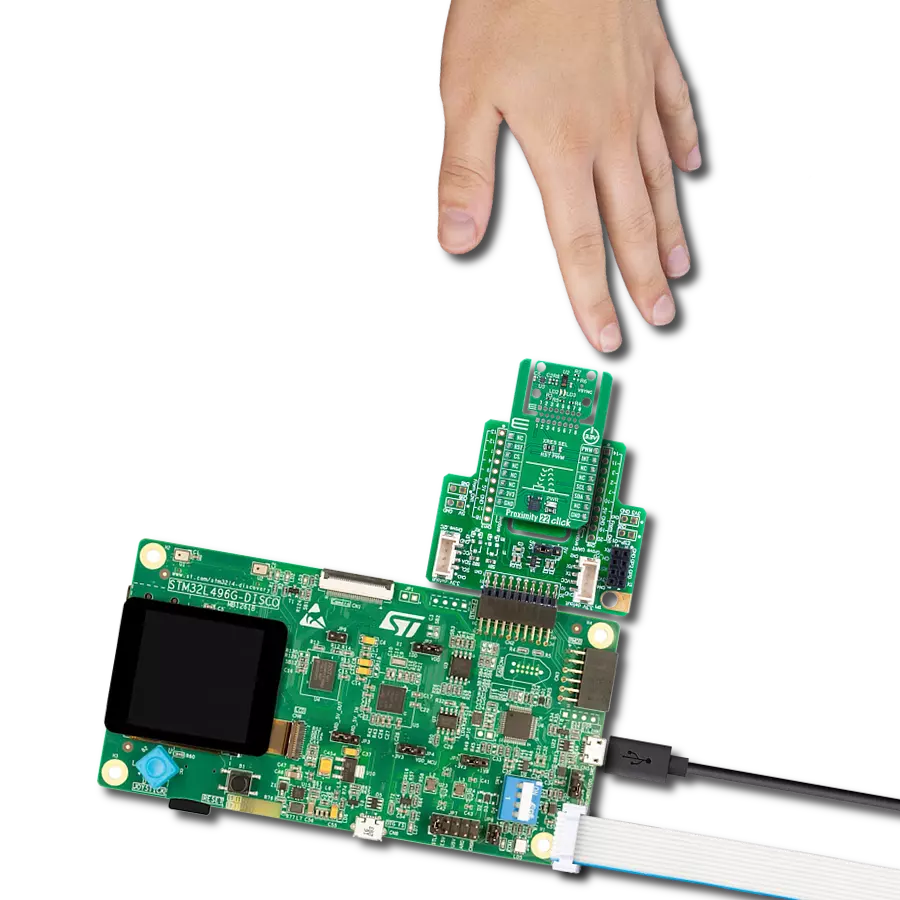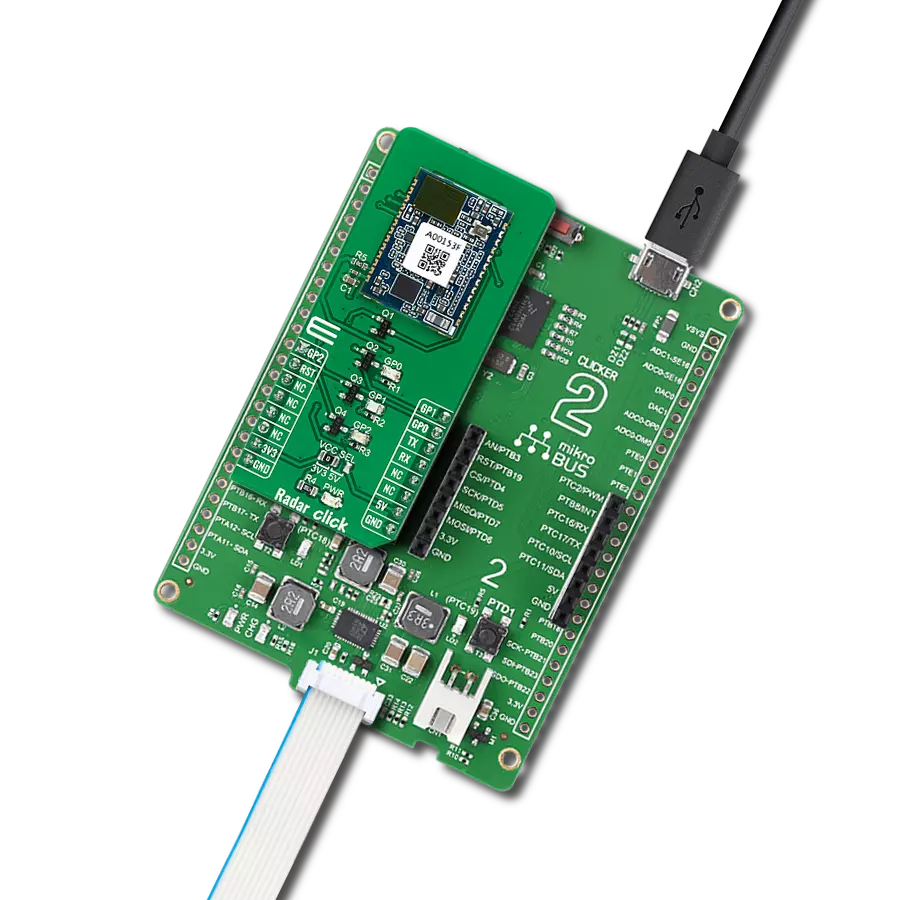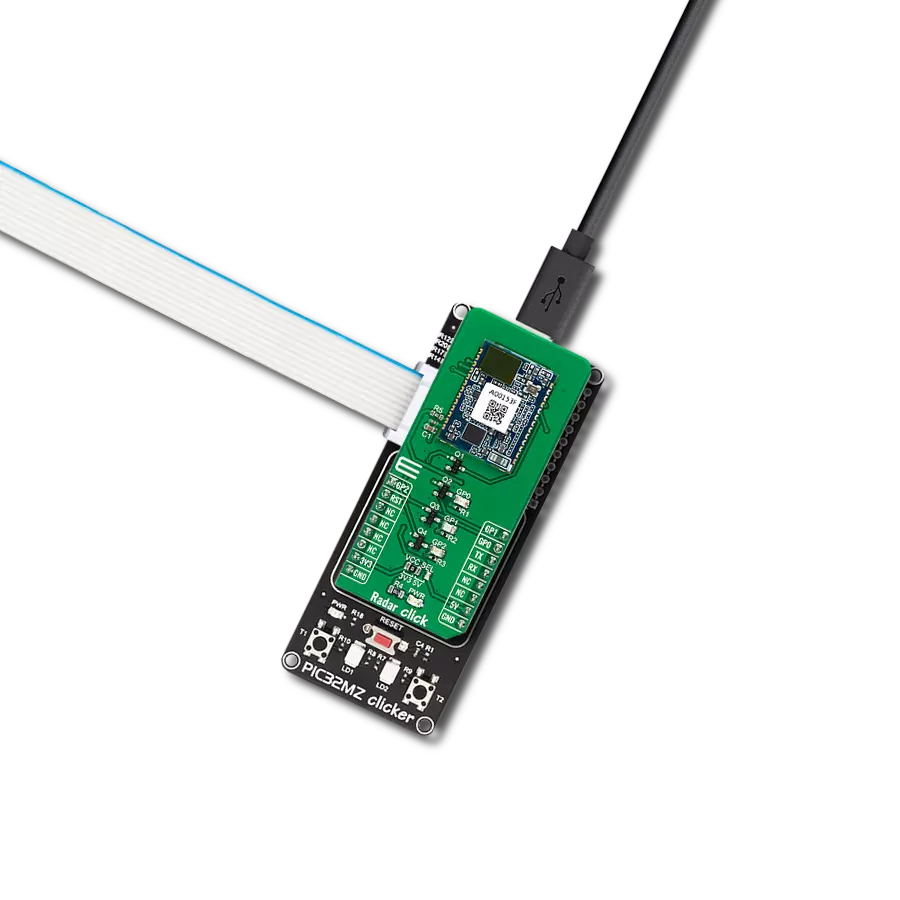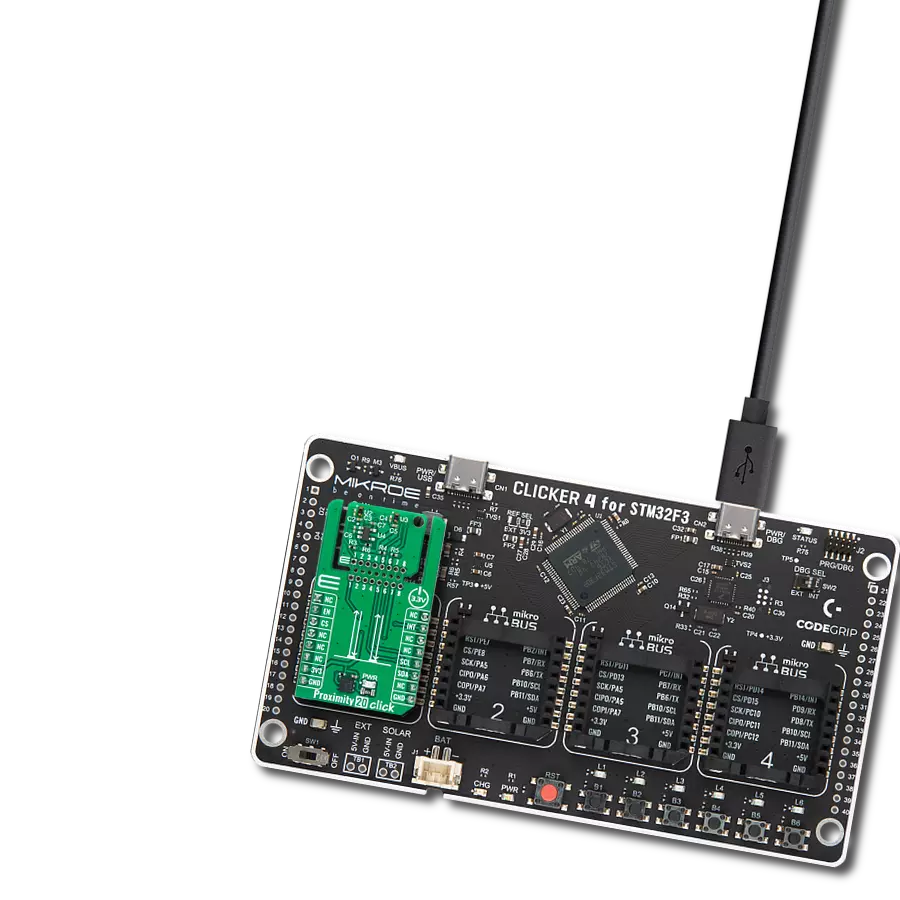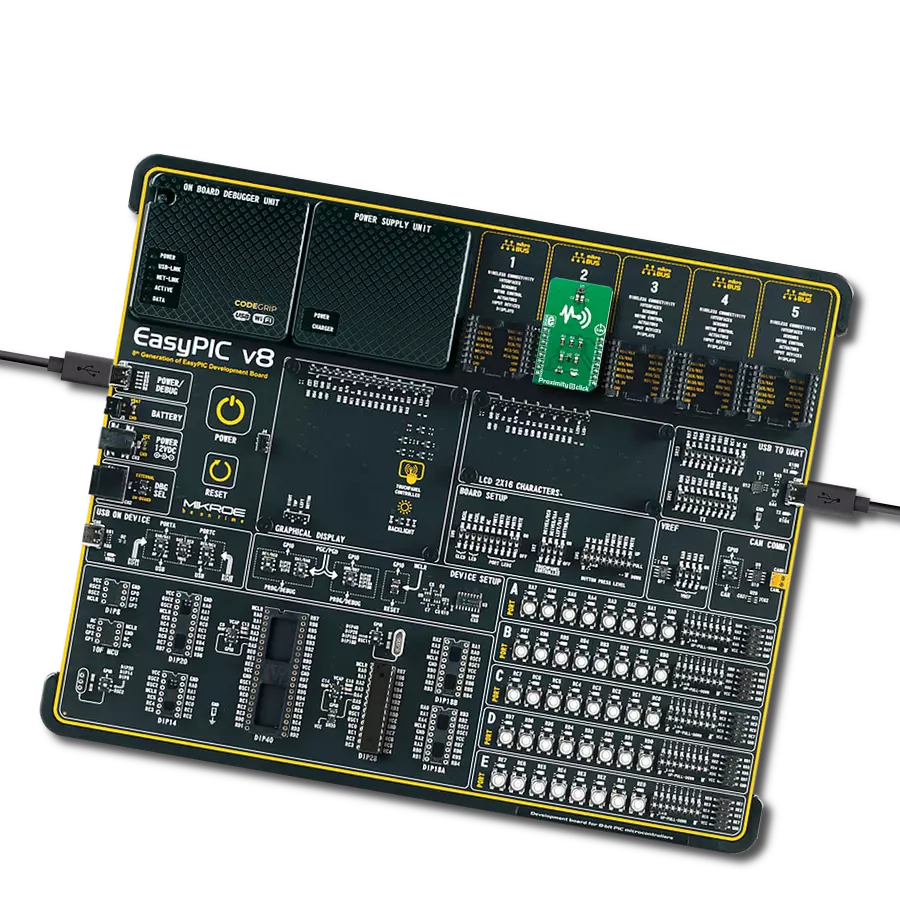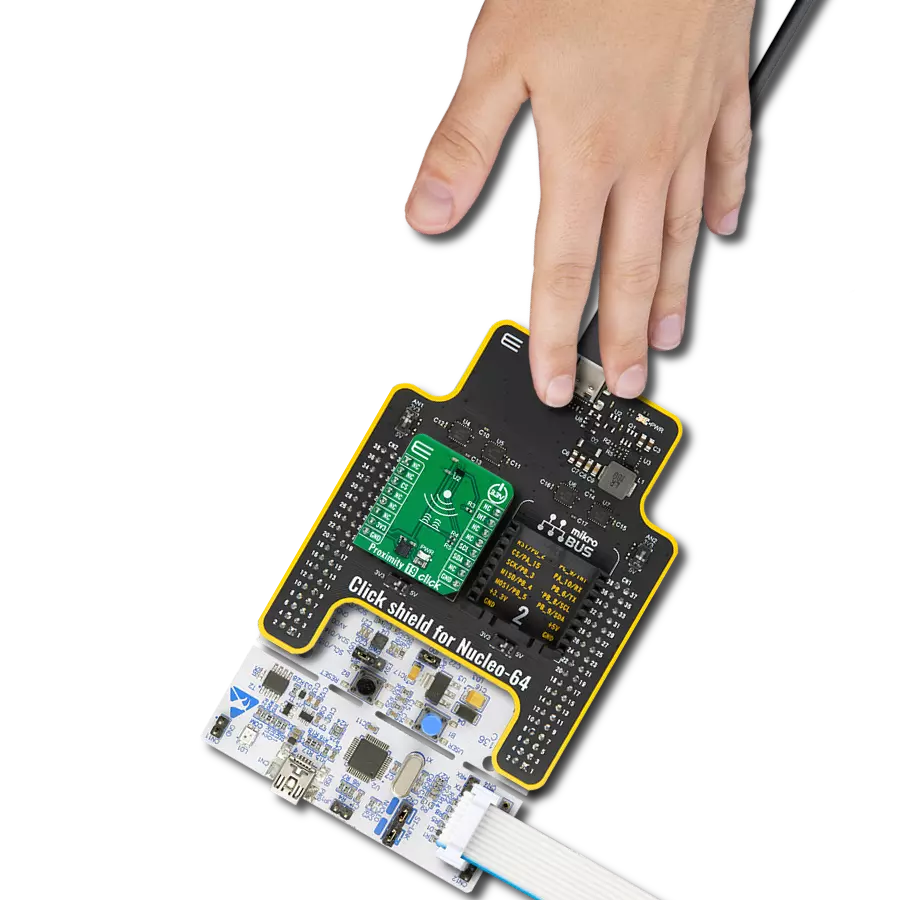Detect the absence or presence of an object without physical contact
A
A
Hardware Overview
How does it work?
Proximity 16 Click is based on the VL53L5CX, an 8x8 multi-zone Time-of-Flight sensor with wide FoV for each zone from STMicroelectronics. The VL53L5CX offers multi-target detection and distance measurement in each zone up to 4 meters. It integrates a SPAD array, physical infrared filters, and diffractive optical elements to achieve the best-ranging performance in various ambient lighting conditions. Also, with ST’s patented histogram algorithms, the VL53L5CX detects multiple objects within the FoV and ensures immunity to cover glass crosstalk beyond 60cm. Using diffractive optical elements above the vertical cavity surface emitting laser (VCSEL) allows a square field-of-view of 45°x45° (63° diagonal)
to be projected onto the scene, where the receiver lens focuses the light reflection onto a SPAD array. The VL53L5CX can range to 8x8 zones at 15Hz for higher resolution or 4x4 at 60Hz for faster-ranging measurements. Proximity 16 Click communicates with MCU using the standard I2C 2-Wire interface to read data and configure settings, supporting Fast Mode Plus Mode up to 1MHz. Also, this Click board™ provides the ability to use I2C communication in Low-Power mode, which activates via the setting of the LP pin routed to the PWM pin on the mikroBUS™ socket. Besides, it provides an intelligent interrupt function that generates every time a ranging measurement is available, alongside an I2C Reset feature
routed to the RST pin on the mikroBUS™ socket, which resets the sensor I2C communication only. Once the host reads the result, the interrupt is cleared, and the ranging sequence can repeat. This Click board™ can only be operated with a 3.3V logic voltage level. The board must perform appropriate logic voltage level conversion before using MCUs with different logic levels. However, the Click board™ comes equipped with a library containing functions and an example code that can be used as a reference for further development.



Features overview
Development board
Arduino UNO is a versatile microcontroller board built around the ATmega328P chip. It offers extensive connectivity options for various projects, featuring 14 digital input/output pins, six of which are PWM-capable, along with six analog inputs. Its core components include a 16MHz ceramic resonator, a USB connection, a power jack, an
ICSP header, and a reset button, providing everything necessary to power and program the board. The Uno is ready to go, whether connected to a computer via USB or powered by an AC-to-DC adapter or battery. As the first USB Arduino board, it serves as the benchmark for the Arduino platform, with "Uno" symbolizing its status as the
first in a series. This name choice, meaning "one" in Italian, commemorates the launch of Arduino Software (IDE) 1.0. Initially introduced alongside version 1.0 of the Arduino Software (IDE), the Uno has since become the foundational model for subsequent Arduino releases, embodying the platform's evolution.
Microcontroller Overview
MCU Card / MCU
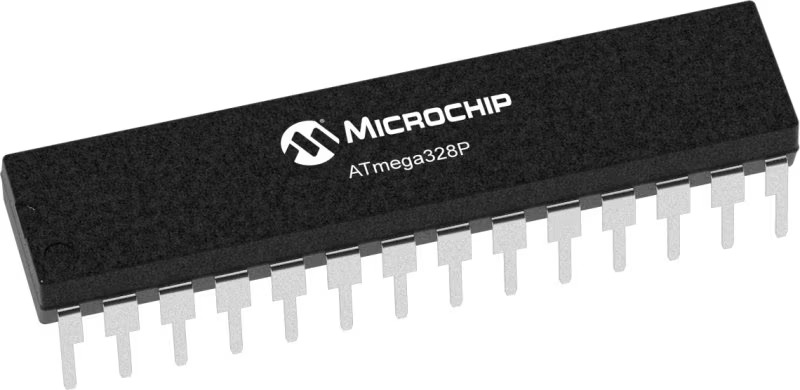
Architecture
AVR
MCU Memory (KB)
32
Silicon Vendor
Microchip
Pin count
28
RAM (Bytes)
2048
You complete me!
Accessories
Click Shield for Arduino UNO has two proprietary mikroBUS™ sockets, allowing all the Click board™ devices to be interfaced with the Arduino UNO board without effort. The Arduino Uno, a microcontroller board based on the ATmega328P, provides an affordable and flexible way for users to try out new concepts and build prototypes with the ATmega328P microcontroller from various combinations of performance, power consumption, and features. The Arduino Uno has 14 digital input/output pins (of which six can be used as PWM outputs), six analog inputs, a 16 MHz ceramic resonator (CSTCE16M0V53-R0), a USB connection, a power jack, an ICSP header, and reset button. Most of the ATmega328P microcontroller pins are brought to the IO pins on the left and right edge of the board, which are then connected to two existing mikroBUS™ sockets. This Click Shield also has several switches that perform functions such as selecting the logic levels of analog signals on mikroBUS™ sockets and selecting logic voltage levels of the mikroBUS™ sockets themselves. Besides, the user is offered the possibility of using any Click board™ with the help of existing bidirectional level-shifting voltage translators, regardless of whether the Click board™ operates at a 3.3V or 5V logic voltage level. Once you connect the Arduino UNO board with our Click Shield for Arduino UNO, you can access hundreds of Click boards™, working with 3.3V or 5V logic voltage levels.
Used MCU Pins
mikroBUS™ mapper
Take a closer look
Click board™ Schematic

Step by step
Project assembly
Software Support
Library Description
This library contains API for Proximity 16 Click driver.
Key functions:
proximity16_get_int_pinThis function returns the INT pin logic state.proximity16_get_resolutionThis function gets the current resolution (4x4 or 8x8).proximity16_get_ranging_dataThis function gets the ranging data, using the selected output and the resolution.
Open Source
Code example
The complete application code and a ready-to-use project are available through the NECTO Studio Package Manager for direct installation in the NECTO Studio. The application code can also be found on the MIKROE GitHub account.
/*!
* @file main.c
* @brief Proximity 16 Click example
*
* # Description
* This example demonstrates the use of Proximity 16 Click board by reading and displaying
* 8x8 zones measurements on the USB UART.
*
* The demo application is composed of two sections :
*
* ## Application Init
* Initializes the driver and performs the Click default configuration.
*
* ## Application Task
* Reads all zone measurements approximately every 500ms and logs them to the USB UART as an 8x8 map.
* The silicon temperature measurement in degrees Celsius is also displayed.
*
* @author Stefan Filipovic
*
*/
#include "board.h"
#include "log.h"
#include "proximity16.h"
static proximity16_t proximity16;
static log_t logger;
void application_init ( void )
{
log_cfg_t log_cfg; /**< Logger config object. */
proximity16_cfg_t proximity16_cfg; /**< Click config object. */
/**
* Logger initialization.
* Default baud rate: 115200
* Default log level: LOG_LEVEL_DEBUG
* @note If USB_UART_RX and USB_UART_TX
* are defined as HAL_PIN_NC, you will
* need to define them manually for log to work.
* See @b LOG_MAP_USB_UART macro definition for detailed explanation.
*/
LOG_MAP_USB_UART( log_cfg );
log_init( &logger, &log_cfg );
log_info( &logger, " Application Init " );
// Click initialization.
proximity16_cfg_setup( &proximity16_cfg );
PROXIMITY16_MAP_MIKROBUS( proximity16_cfg, MIKROBUS_1 );
if ( I2C_MASTER_ERROR == proximity16_init( &proximity16, &proximity16_cfg ) )
{
log_error( &logger, " Communication init." );
for ( ; ; );
}
if ( PROXIMITY16_ERROR == proximity16_default_cfg ( &proximity16 ) )
{
log_error( &logger, " Default configuration." );
for ( ; ; );
}
log_info( &logger, " Application Task " );
}
void application_task ( void )
{
if ( !proximity16_get_int_pin ( &proximity16 ) )
{
proximity16_results_data_t results;
uint8_t resolution, map_side;
err_t error_flag = proximity16_get_resolution ( &proximity16, &resolution );
error_flag |= proximity16_get_ranging_data ( &proximity16, &results );
if ( PROXIMITY16_OK == error_flag )
{
map_side = ( PROXIMITY16_RESOLUTION_4X4 == resolution ) ? 4 : 8;
log_printf ( &logger, "\r\n %ux%u MAP (mm):\r\n", ( uint16_t ) map_side, ( uint16_t ) map_side );
for ( uint16_t cnt = 1; cnt <= resolution; cnt++ )
{
log_printf ( &logger, " %u\t", results.distance_mm[ cnt - 1 ] );
if ( 0 == ( cnt % map_side ) )
{
log_printf ( &logger, "\r\n" );
}
}
log_printf ( &logger, " Silicon temperature : %d degC\r\n", ( int16_t ) results.silicon_temp_degc );
}
}
}
int main ( void )
{
/* Do not remove this line or clock might not be set correctly. */
#ifdef PREINIT_SUPPORTED
preinit();
#endif
application_init( );
for ( ; ; )
{
application_task( );
}
return 0;
}
// ------------------------------------------------------------------------ END
Additional Support
Resources
Category:Proximity
